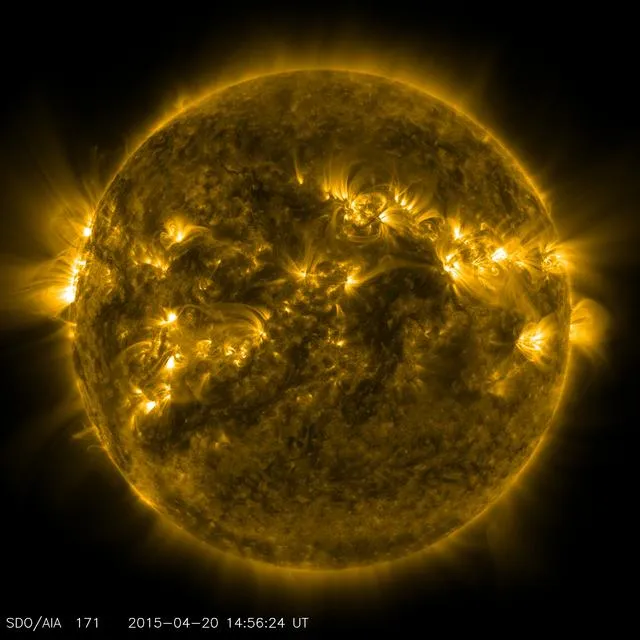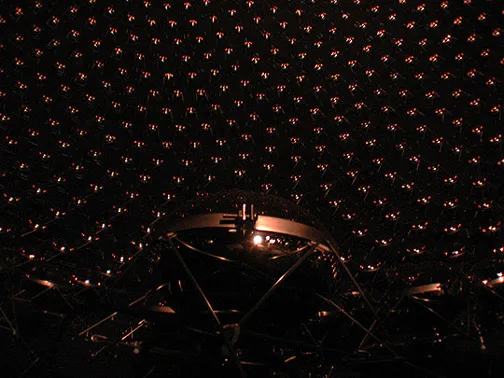The existence of three classes of neutrinos is confirmed today, which matches the predictions of the Standard Model of particle physics that also considers them massless. However, recent findings demonstrate that neutrinos are massive, so that they turn into each other when propagating.
Whereas these so-called neutrino oscillations are understood better and better, data recently revealed anomalies. One possible explanation features a fourth type of neutrino, called sterile neutrino.
In contrast with the three neutrinos of the Standard Model, sterile neutrinos only interact through gravity and via oscillations into the other ‘active’ neutrinos. More fascinatingly, such a sterile neutrino could viably be dark matter!

[image credits: @pab.ink]
Neutrinos in a nutshell

[image credits: NASA/SDO ]
Neutrinos were discovered 100 years ago when the mysteries of radioactivity were worked out.
A significant amount of energy was disappearing in the radioactive decay of unstable atomic nuclei, which challenged energy-momentum conservation (one the most solid laws of physics).
This missing energy was in fact carried away by an electronic neutrino, i.e. an invisible particle related to the electron.
In 2019, we know that there are three ‘flavours’ of neutrino respectively associated with electrons, muons and taus (muons and taus being heavier versions of the electron). Moreover, when they propagate, each neutrino can oscillate into another one.
Neutrino oscillations and their anomalies
As a consequence of its oscillating nature, a neutrino can be produced as of a given flavour A, and be observed, hundreds of kilometres away, as a neutrino of a different flavour.
This is called neutrino disappearance (we observe less neutrinos of type A than produced) and appearance (we observed flavours of neutrinos that were not initially produced).

[image credits: Fermilab]
All appearance and disappearance processes can be explained by fitting from data a handful of parameters.
In the 1990s, the LSND experiment studied the appearance of electronic neutrinos from muonic neutrinos and observed much more electronic neutrinos than expected.
As this seemed to contradict all other neutrino experiments (and the fits), MiniBooNE was designed to test the same signal with another technique.
The anomaly was confirmed in 2018, without totally excluding the standard neutrino oscillation mechanism.
Saved by sterile neutrinos?
The LSND and MiniBooNe anomalies can be explained by adding to the Standard Model a fourth, sterile, neutrino. This neutrino does not feel the weak interaction, in contrast to the other neutrinos, and can thus only appear through their oscillations.
A recent publication has shown (see the figure below) that if the sterile neutrino is much heavier than the other neutrinos (the y-axis) and mixes a little bit with them (the x-axis), it becomes possible to obtain a fairly good fit of neutrino data.

[image credits: arxiv]
In the meantime, the ICARUS and OPERA experiments further tested the sterile neutrino hypothesis, everything on the right of the purple and green lines being now excluded. We should however stay tuned as future improvements are expected.
Take-home message: the door to dark matter
We know today that there are three species of neutrinos that oscillate into each other. However, data exhibits some anomalies with respect to our understanding of neutrino physics. This may point to the existence of a fourth sterile neutrino that does not interact through weak interactions.
Whilst such a neutrino helps to get good fits of all neutrino data, it also consists in a particle extremely weakly interacting with the rest of the Standard Model (i.e. only via a feeble mixing with the active neutrinos and gravity). Could it be dark matter?
The short answer is yes: adding several sterile neutrinos to the Standard Model could allow the theory to be cosmologically favoured.
PS: This article has been formatted for the steemstem.io front-end. Please see here for a better reading.
SteemSTEM
SteemSTEM aims to make Steem a better place for Science, Technology, Engineering and Mathematics (STEM) and to build a science communication platform on the blockchain.
Make sure to follow SteemSTEM on steemstem.io, Steemit, Facebook, Twitter and Instagram. Please also consider supporting our witness (@stem.witness).
